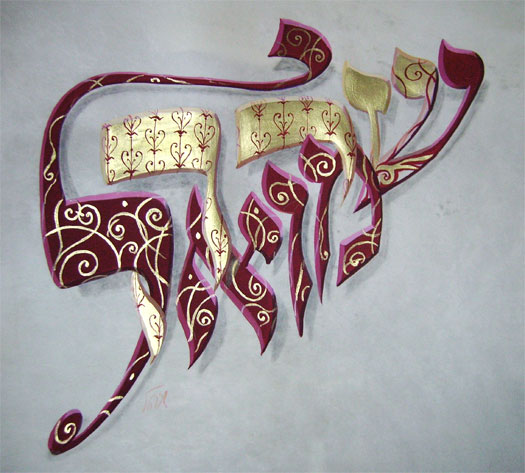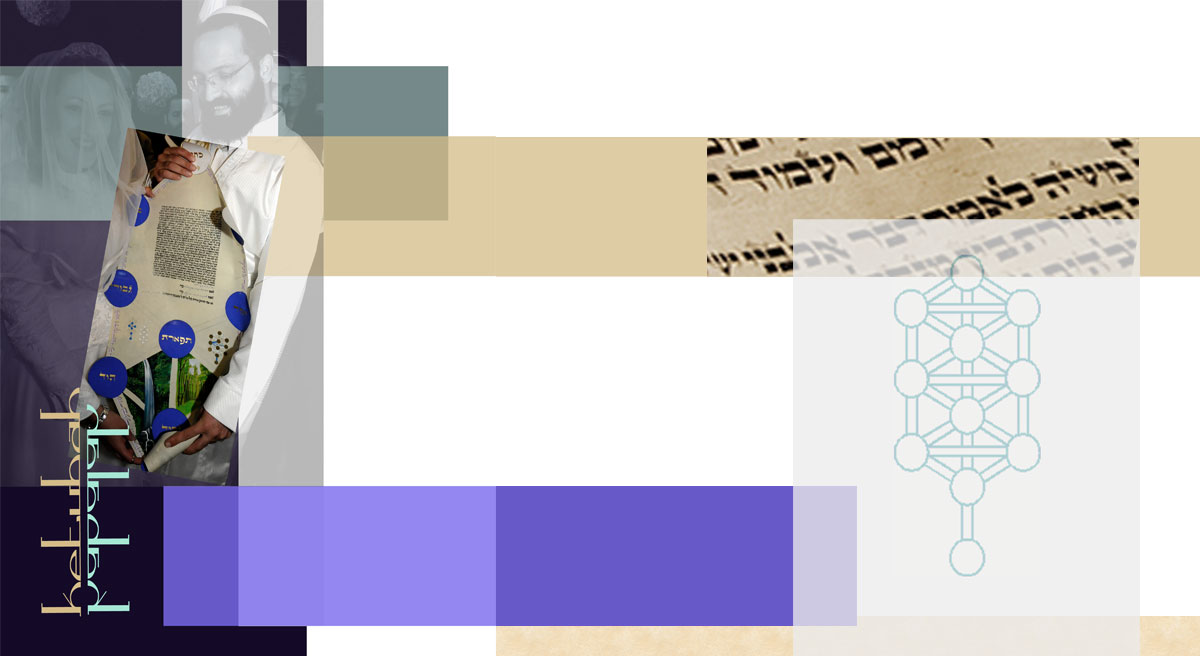| |
|
In questa ketubah vediamo che i nomi dei due sposi, Eliahu e Dvorah, unendosi formano il Nome di D', il Tetragramma ineffabile: le ultime tre lettere del nome Elihau, yùd, hè, vàv, si uniscono all'ultima lettera del nome Dvorah, la hè...il maschile scende attratto dal femminile (la ultima lettera del Tetragramma rappresenta la sefirà Malkhut), e il femminile a sua volta sale, viene elevato, innalzato verso l'alto.
L'unione di questi nomi dimostra un'armonia perfetta e la presenza della più alta Kedushà all'interno della coppia.
(ketubah vista per intero)
|
| |
|
Nel dettaglio di quest'altra ketubah è messa in rilievo la lettera shìn che lega i due nomi degli sposi, Shmuel e Sarah:

Vediamo ancora un dettaglio di un'altra ketubah in cui sono rappresentati i tefillìn del capo e del braccio come i poli maschile e femminile di un'unica mitzvà: i tefillìn del capo rappresentano il polo maschile, in quanto legati alla mente, il pensiero, l'astrazione, l'analisi, la sfera della conoscenza e razionalità. I tefillìn del braccio, rivolti verso il cuore, sono il polo femminile, che rappresenta la sfera dei sentimenti, delle emozioni, le passioni, l'azione.
(per saperne di più sull'argomento clicca qui)

|


